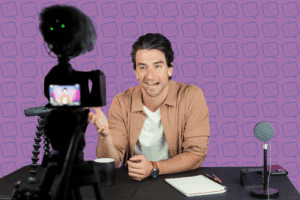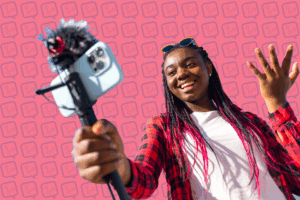What Do Brands Look For In An Influencer?

The most obvious answer to this question would be, “that depends on the brand.” It’s the right answer, though, because each brand is different. Each brand has different goals, different values, a different mission, a different target demographic for advertising, a different advertising budget and strategy, and different unit economics. Those are a lot of variables at play that all help determine what a brand looks for in an influencer.
With all of that said, in my execution of countless influencer deals on behalf of a wide variety of consumer brands, I do believe there are three high level themes that connect each influencer deal. These themes are Performance, Brand Safety, and Compensation.
In this article, I will explain how these three themes come together to inform exactly what brands are looking for when they reach out to influencers and creators with the hope of forming a partnership or sponsorship.
Performance
Performance is about whether the influencer will drive the specific results that the brand wants to see in the marketing campaign. At InfluenceLogic, we run a lot of marketing campaigns that are customer acquisition focused. That means the performance of the campaign is dependent on whether or not customers sign up and purchase the product or service.
There are some brands that don’t pay as much attention to this type of performance. There are some brands that focus on awareness. This is why you see a lot of brands spending money on television advertising. There are many advertising channels that are not direct response related.
So first and foremost, the brand is interested in whether or not the campaign performed. If the campaign did perform, then the brand can justify the amount of money that they spent on the influencer. If brands know their data, they know how much they can afford to pay an influencer for a promotion based on historical performance with other comparable influencers.
Brand Safety
The second piece of this puzzle as to what brands look for in an influencer is brand safety. Brand safety is something that has always been around but has become more and more important to brands as social media has become more and more divisive.
There are countless examples of a brand making a mistake on social media and receiving backlash from a community in response to whatever mistake or action the brand took that was controversial to that community. In turn, brands are now being more discerning and careful in terms of who they choose to align with in representing their brand. This is true for both the largest brands and the smallest brands. This is true for direct response brands, as well as brands focused on awareness and don’t do direct response driven campaigns.
Here are the most important elements that brands look for in an influencer in regards to brand safety. First and foremost, does the influencer align with the actual brand? Does the influencer make sense for the brand? Does what the influencer talks about, does the influencer’s style, and is the audience of the influencer related to the brand and its product or service offering? If that answer is yes, then we move on to the next question.
Is this influencer controversial? Does this influencer have any specific opinions or beliefs that they’re very outspoken about that can be deemed as controversial? Also it’s important to note that the word controversial can have a few different meanings. Controversial is a spectrum and it ranges from the most unacceptable concepts like hate speech and violence. Those are widely unacceptable practices to most brands. But there are also concepts and beliefs that are unacceptable to certain groups of people and acceptable to other groups of people. And it is up to the brand as to where their tolerance for these beliefs that are more gray area resides.
Some brands are very tolerant and some brands are not tolerant and they don’t want to associate with anything that might be controversial to one group or community and not controversial to another.
So as we see, it is a function of “will this creator perform,” along with “will this creator jeopardize my brand’s perception in the greater economic and media landscape?” If a brand thinks that an influencer will perform and it won’t risk their brand’s reputation, then the final variable here is compensation.
Compensation
Compensation relates to how much a brand wants to pay, or can afford to pay an influencer for his or her services. When a brand reaches out to a creator or influencer, and the influencer shows interest, then the negotiation of how much the brand will pay begins.
Like my initial answer in this article, the true answer is nuanced and there’s no one set formula that drives pricing in the creator economy. Sometimes it is a subjective negotiation, but sometimes the brand will do an analytical review of multiple variables. These variables include:
- Relevance to the brand
- Audience synergy with the brand
- Demographics like age, gender, geography of the audience
- The number of views that a certain piece of content gets
- Whether it’s on YouTube, Instagram, a podcast or TikTok
All of these variables play into what the brand will deem a fair price. In addition, the influencer needs to also be thinking about these variables and coming up with what they believe is a fair price. When the two prices align, a deal gets done, and when content is delivered and distributed over the creator’s social media, the content meets performance expectations in terms of the brand’s goals, and remains safe in terms of brand safety, then you have the seed for a very great, long term partnership.
Conclusion
And at the end of the day, both brands and influencers want long term partnerships. So the three components in terms of what brands look like, look for in an influencer are our performance, brand safety, and price. If those three things align, you’ve got to deal.
We wish you the best of luck as you begin working with brands to drive new revenue to your social media channel and business. And if you’re a brand reading this, we wish you the best of luck creating the most impactful partnerships for your brand!






